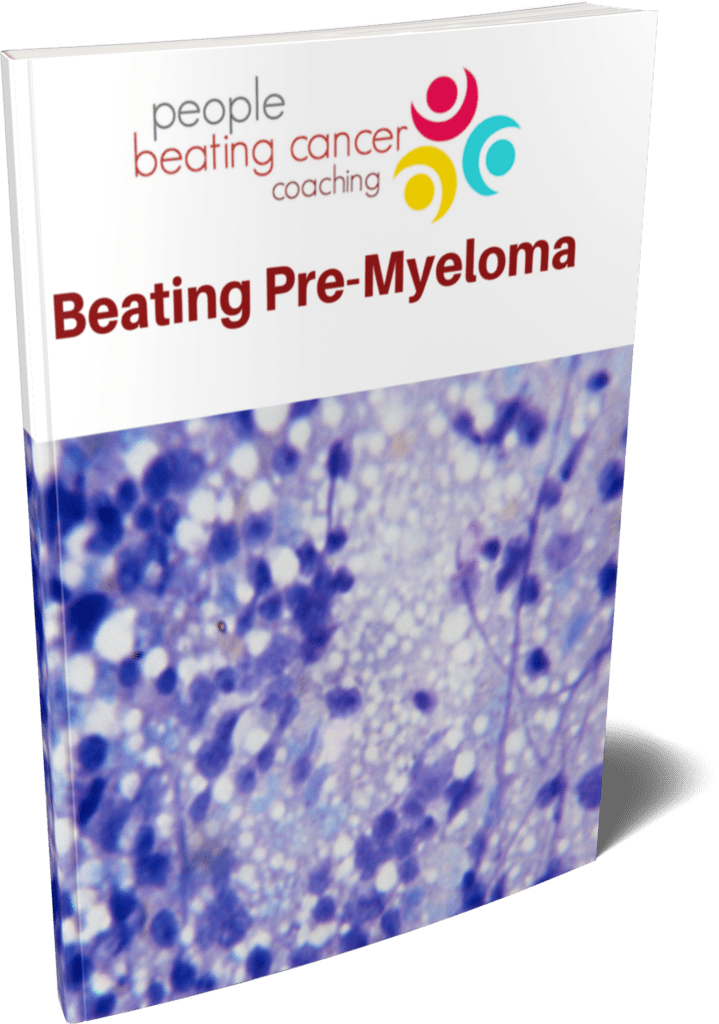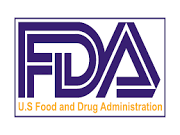
Diagnosed with SMM, SPB, or MGUS?
Learn how you can stall the development of full-blown Multiple Myeloma with evidence-based nutritional and supplementation therapies.
Click the orange button to the right to learn more.
- You are here:
- Home »
- Blog »
- Pre-Myeloma »
- MGUS, SMM, SBP are Pre-Myeloma
MGUS, SMM, SBP are Pre-Myeloma

MGUS, SMM and SPB (monoclonal gammopathy of undetermined significance, smoldering multiple myeloma and single plasmacytoma of bone) are Pre-Myeloma- precursor diagnostic stages of the blood cancer called multiple myeloma. Think of the term pre-myeloma the way you think of
- Colon polyps as pre colon cancer or
- Barrett’s Esophagus as pre-esophageal cancer or
- Ductal Carcinoma In-Situ as pre-breast cancer
A type of pre-cancer can increase your risk of a diagnosis of that cancer. However, a diagnosis of a pre-cancer is not a diagnosis of cancer. Further, there are usually therapies shown to also reduce the risk of that cancer.
Conventional oncology usually tells the MGUS, SMM, SPB patient to “watch and wait” or than nothing can be done to prevent a diagnosis of full multiple myeloma.
This is because there are no FDA approved therapies shown to reduce the risk of a MM diagnosis. There are, however, many non-conventional therapies such as nutrition, supplementation and lifestyle therapies, shown to reduce the risk of a myeloma diagnosis.
These percentages increase annually.
Conventional oncology considers MGUS and SMM to be blood disorders, not cancer. As such, your oncologist may tell you that there are no treatments. This makes perfect sense because board-certified medical doctors prescribe FDA approved therapies. M.D.s do not prescribe evidence-based but non-conventional therapies such as curcumin.
Curcumin is not an FDA approved therapy. Nor is vitamin D3, even though this supplement has been shown to enhance bone mineral density aka bone strength. Nor is the Mediterranean diet.
In my experience, it is in the best interests of the newly diagnosed MGUS and SMM patient to understand the strengths and weaknesses of conventional oncology. I am not criticizing oncologists. I’m simply acknowledging what they do and don’t do.
The study linked and excerpted below is the first study I’ve seen that:
- Tracks actual MGUS and SMM patients- (curcumin has been studied thousands of time. But in vitro and in vivo)
- Follows MGUS and SMM patients for years, not just months
- Shows curcumin improving markers of disease progression
- Discusses the concept of high-risk SMM patients undergoing chemotherapy
In short, the study confirms what pre-myeloma and full myeloma patients have wondered for years. Do non-conventional therapies help patients?
Have you been diagnosed with either MGUS, SMM or a SPB? To learn more about evidence-based, non-conventional therapies that can help you manage your pre-myeloma, scroll down the page, post a question or comment and I will reply to you ASAP.
Hang in there,
David Emerson
- MM Survivor
- MM Cancer Coach
- Director PeopleBeatingCancer
Long-term follow-up of curcumin treated MGUS/SMM patients – an updated single centre experience
“Patients with MGUS or SMM are not offered therapeutic options to date and standard of care remains observation with re-evaluations of the patient every 3-4 months…
Because symptomatic myeloma may not evolve for as long as 20 years (or ever), it is currently not possible to predict the clinical course of MGUS or SMM…
Given the uncertainty of disease progression with MGUS and SMM, early intervention aimed at potentially slowing down or stopping disease progression might be therapeutic. Curcuma longa (turmeric) is a tropical plant native to southern and southeastern tropical Asia. It is a perennial herb belonging to the ginger family. The most active component in turmeric is curcumin [5]. Curcumin has been shown to inhibit the proliferation of multiple myeloma cells through the downregulation of IL-6 and NF-kB. Bharti et al. showed that curcumin suppresses proliferation and induces apoptosis in multiple myeloma cells through the suppression of RANKL signaling [6]…
Based on its antimyeloma cell activity, we have performed a number of studies with curcumin in MGUS/SMM patients, including a randomised, double-blind placebo- controlled cross-over study, published in the American Journal of Hematology [7] where we showed that treatment of MGUS/SMM patients with curcumin resulted in an improvement in markers of disease progression (i.e., free light-chain ratio (rFLC), paraprotein levels, percentage plasma cells) in some patients [8].
A number of patients who participated in our studies and who showed a benefit, have continued to take curcumin over a number of years, of their own volition, even though the studies in which they were participating are complete…
We present here an update on the long-term follow-up of 13 MGUS/SMM patients who have been taking curcumin (at a dose of 4 -8 grams daily) for a period of 3-9 years (Table 1). The patients are monitored every 3-6 months with blood tests being done at each monitoring visit. As far as we know, we are the only centre treating MGUS/SMM patients with curcumin…
From the table, it can be seen that there are 6 MGUS and 7 SMM patients, 11 are IgG, 1x IgA and 1x IgM. Eight have kappa disease and 5 have lambda disease. Six patients are male and 7 females and the average age is 68 years.
The median time of curcumin administration is 5.6 years and only one patient has developed progressive disease (patient no. 8 – cardiac amyloidosis) after 6 years of curcumin therapy.
This patient has commenced anti-myeloma therapy. Five patients showed a decrease in paraprotein levels, 3 increased slightly while the rest remained stable. The bone marrow plasma cells decreased in 4 patients and increased modestly in 2 others while it remained the same in 3.
Three MGUS patients have not had bone marrow aspirates/biopsies done. Five patients showed a decrease in hemoglobin while it increased slightly or remained stable in the others. Whilst the involved free light chain increased in most patients, this was accompanied by an increase in the uninvolved free light chain in most of the patients, leading to a decrease in ratio in 3 of the patients…
There is currently much debate about early treatment of high risk SMM patients, with updated IMWG diagnostic criteria for early treatment. These include serum free-light chains ratio >100, >60% plasma cells and >1 focal lesion by MRI. Several trials have been initiated to test early intervention in high-risk SMM patients.
While some of the trials have shown benefit to high risk SMM patients, most of these trials have been associated with toxic events which has included hematologic events (neutropenia, thrombocytopenia, anemia) and nonhematologic events (infection, rash, asthenia, constipation, diarrhoea, deep-vein thrombosis).
Our data suggest that curcumin administration may benefit some patients diagnosed with MGUS or SMM with little or no toxicity even after 9 years of therapy.
Future studies should assess the role of curcumin in both MGUS and SMM patients – prior to progression to high risk or active myeloma – as this may lead to a delay in or may even stop disease progression. Although one patient has progressed to amyloidosis, the other twelve have maintained stable disease with no clear evidence of disease progression.
Patient tolerance has been good and none have developed clinical infections. The drawback of this correspondence is the small number of patients on long-term curcumin therapy.”


